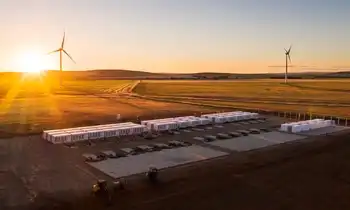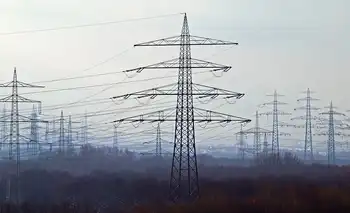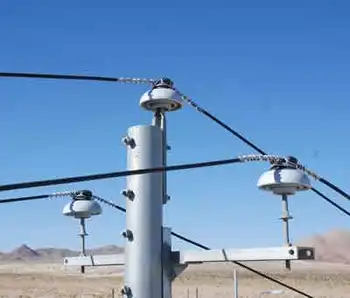OSHA Leaves Worker Safety in Hands of Industry
By New York Times
Protective Relay Training - Basic
Our customized live online or in‑person group training can be delivered to your staff at your location.

- Live Online
- 12 hours Instructor-led
- Group Training Available
Puzzled Missouri health authorities turned to two federal agencies in Washington. Scientists at the National Institute for Occupational Safety and Health, which investigates the causes of workplace health problems, moved quickly to examine patients, inspect factories and run tests. Within months, they concluded that the workers became ill after exposure to diacetyl, a food-flavoring agent.
But the Occupational Safety and Health Administration, charged with overseeing workplace safety, reacted with far less urgency. It did not step up plant inspections or mandate safety standards for businesses, even as more workers became ill.
On Tuesday, the top official at the agency told lawmakers at a Congressional hearing that it would prepare a safety bulletin and plan to inspect a few dozen of the thousands of food plants that use the additive.
That response reflects OSHA’s practices under the Bush administration, which vowed to limit new rules and roll back what it considered cumbersome regulations that imposed unnecessary costs on businesses and consumers. Across Washington, political appointees — often former officials of the industries they now oversee — have eased regulations or weakened enforcement of rules on issues like driving hours for truckers, logging in forests and corporate mergers.
Since George W. Bush became president, OSHA has issued the fewest significant standards in its history, public health experts say. It has imposed only one major safety rule. The only significant health standard it issued was ordered by a federal court.
The agency has killed dozens of existing and proposed regulations and delayed adopting others. For example, OSHA has repeatedly identified silica dust, which can cause lung cancer, and construction site noise as health hazards that warrant new safeguards for nearly three million workers, but it has yet to require them.
“The people at OSHA have no interest in running a regulatory agency,” said Dr. David Michaels, an occupational health expert at George Washington University who has written extensively about workplace safety. “If they ever knew how to issue regulations, they’ve forgotten. The concern about protecting workers has gone out the window.”
Agency officials defend their performance, saying that workplace deaths and injuries have declined during their tenure. They have been considering new standards and revising outdated ones that were unduly burdensome on businesses, they said, adding that they have moved cautiously on new rules because those require extensive scientific and economic analysis.
“By the time the Bush administration is done — we have a good record already — we will have a better record,” said Edwin G. Foulke Jr., the agency’s head, in a recent interview.
On diacetyl, Mr. Foulke said “the science is murky” on whether the additive causes bronchiolitis obliterans, the disease that has been called “popcorn worker’s lung.” That claim is echoed by some industry officials, but a number of leading scientists and doctors agree with scientists at the national occupational safety institute that there is strong evidence linking the additive to the illness.
Without an OSHA standard, which would establish the permissible level of exposure for workers, companies can set any limit of exposure they want. Instead of regulations, Mr. Foulke and top officials at other agencies favor a “voluntary compliance strategy,” reaching agreements with industry associations and companies to police themselves.
Administration officials say such programs are less costly, allowing companies to hire more workers and keep consumer prices down. The number of voluntary agreements has grown in recent years, but they cover a fraction of the seven million work sites that OSHA oversees, or less than 1 percent of the work force. Sixty-one food plants out of the tens of thousands across the country participate; industry representatives say other businesses are taking steps to protect workers on their own.
Critics say the voluntary programs tend to have little focus on specific hazards and no enforcement power. Because only companies with strong safety records are eligible, they argue, the programs do not force less-conscientious businesses to improve their workplaces. A 2004 study by the Government Accountability Office found some promising results from such programs, but recommended against expanding them until their effectiveness could be assessed.
“OSHA has been focusing on the best companies in their voluntary protection program while doing nothing in the area of standard setting,” said Peg Seminario, the director of occupational safety and health at the A.F.L.-C.I.O. “They’ve simply gotten out of the standard-setting business in favor of industry partnerships that have no teeth.”
While labor organizations and public health experts argue that the agency has been lax in recent years, some industries have applauded its efforts. Construction companies, for example, are pleased that OSHA recently decided to relax the standards for handling explosives.
The agency had long been the target of businesses that criticized its rules as arbitrary, costly and confusing. Three of the biggest industries regulated by OSHA — transportation, agribusiness and construction — have given more than $630 million in political campaign contributions since 2000, with nearly three-quarters of that money going to Republicans. The Bush administration has promised to address their concerns.
“We’re also going to bring a transparency to the regulatory jungle that is unprecedented in the federal government,” Labor Secretary Elaine L. Chao told business owners in a speech on June 2002. “There are more words in the Federal Register describing OSHA regulations than there are words in the Bible. They’re a lot less inspired to read and a lot harder to understand. This is not fair.”
Until recently, Congress has provided no significant oversight of OSHA. With Democrats now back in control, House and Senate committees are holding hearings.
Among those who testified Tuesday was Eric Peoples, a former worker at the popcorn plant in Jasper, a small town 125 miles south of Kansas City. Once healthy, the 35-year-old Mr. Peoples has been told by doctors that he will need a double-lung transplant. Far from Washington, he finds the debate over the calculus of regulation — the costs to companies and consumers of upgrading workplaces versus the possible health benefits to workers — baffling.
“I can’t understand what it would take to get them to pass rules to make it safer to handle this stuff,” Mr. Peoples said, referring to diacetyl. “Something needs to be done.”
The Occupational Safety and Health Administration was created under President Richard M. Nixon in 1970 after Congressional hearings exposed dangerous workplace conditions. The agency was to set and enforce safety standards as well as detect health hazards before they could take a toll on workers. Since the agencyÂ’s creation, deaths and injuries on the job have steadily declined. Regulators have taken credit for much of that trend, though experts also cite pressure from insurers and lawsuits. Government records show that in 2005, more than 6,800 workplace-related deaths occurred, along with 4.2 million injuries and illnesses. OSHA officials say that since 2001, the fatality rate has declined by 7 percent and the injury rate by 19 percent.
Labor leaders and health experts say those numbers significantly undercount the problem, in part because the Bush administration has reduced the categories of recognized injuries and because many dangerous jobs are now performed by undocumented workers who do not report problems.
In one of his first acts in office, President Bush signed legislation repealing one of OSHAÂ’s most-debated accomplishments during the Clinton administration, an ergonomics standard intended to reduce injuries to factory, construction and office workers from repetitive motions and lifting. Business groups and manufacturers had lobbied against the measure, saying it would cost $100 billion to carry out.
By the end of 2001, OSHA had withdrawn more than a dozen proposed regulations. The agency, though, soon identified several safety priorities: rules on the hazards posed by dust from silica, used as a blasting agent, and noise from construction sites, which was causing a growing number of workers to suffer hearing loss. The agency has yet to produce either standard, though OSHA officials say they are working on them.
Mr. Foulke, the OSHA chief, has a history of opposing regulations produced by the agency he now leads. He has described himself as a “true Ronald Reagan Republican” who “firmly believes in limited government.” Before coming to Washington last year, Mr. Foulke, a former Republican Party state chairman in South Carolina and top political fund-raiser, worked in Greenville, S.C., for a law firm that advises companies on how to avoid union organizing. Representing the United States Chamber of Commerce, he had testified before Congress several times to promote voluntary OSHA compliance programs. He also opposed the ergonomics standards.
And as a member in the 1990s of an independent agency that reviews OSHA citations, he led a successful effort to weaken the agencyÂ’s enforcement authority.
Early in his tenure at OSHA, Mr. Foulke delivered a speech called “Adults Do the Darndest Things,” which attributed many injuries to worker carelessness. Large posters of workers’ making dangerous errors, like erecting a tall ladder close to an overhead wire, were displayed around him.
“Kids don’t always know what their parents do all day at work, but they instinctively understand the importance of them working safely,” he told the audience, which included children who had won a safety-poster contest. “In contrast, adults could stand to learn a thing or two. Looking at the posters, I was reminded of a couple examples of safety and health bloopers that are both humorous and horrible.”
Soon after Eric Peoples began working at the Jasper popcorn plant in 1997, he was thrilled to get a promotion: from the assembly line, which paid $6 to $7 an hour, to the mixing room, where he got more than $11 an hour to prepare ingredients.
Ten months later, Mr. Peoples recalled in a recent interview, he came down with a fever and chills. Doctors first said that Mr. Peoples, then 27, had pneumonia. When he did not improve, he saw a specialist who treated him for asthma. Still suffering from breathing problems, Mr. Peoples was hospitalized in St. Louis. After days of testing, doctors diagnosed bronchiolitis obliterans.
“My lung capacity had dropped to 18 percent,” Mr. Peoples said. He was told that there was no cure for the often-fatal disease and that he would likely need a double lung transplant to survive.
Some of his co-workers had similar health problems. A local lawyer whose mother had fallen ill showed the medical records of several workers to Dr. Allen Parmet, a former T.W.A. medical director who specializes in occupational hazards.
“It took me about 15 or 20 minutes to see there was a pattern,” said Dr. Parmet, who in his previous two decades in medicine had seen only three other cases of bronchiolitis obliterans. He contacted the Missouri Department of Health, which then notified the agencies in Washington. The Missouri officials noted that in addition to nine sick workers identified by Dr. Parmet, 20 to 30 current and retired workers had similar symptoms. All had been exposed to vapors from diacetyl, a compound found naturally in cheese, butter, milk and other foods. It is added for the buttery taste in microwave popcorn and widely used as a flavoring agent in other foods, like snacks and pastries.
Although Dr. ParmetÂ’s letter was the first that Washington learned of a possible problem with diacetyl, some companies had been aware of the health hazards. In late 1996, the Flavor and Extract Manufacturers Association heard from a company that a flavoring plant employee had developed bronchiolitis obliterans. Three years earlier, BASF, the German chemical maker, had found in animal studies that diacetyl caused severe respiratory problems.
After scientists from the national occupational safety institute visited the Jasper factory and examined the injured workers, the agency issued a bulletin in September 2001 saying “a work-related cause of lung disease” had occurred there. In December 2003, the agency issued an alert to more than 4,000 businesses, with tens of thousands of workers, that suggested safeguards.
OSHAÂ’s response was more limited. The agency sent an inspector to the Jasper plant, but he did not test the air, saying the companyÂ’s insurers had done an environmental sampling four years earlier. He concluded that the plant was in compliance with existing rules and closed the case.
Sixteen months later, a lawyer for ill workers filed a complaint with the agency. OSHA conducted a 40-minute inspection, but said it could do nothing more because there was no safety standard that established what level of diacetyl was acceptable. Since the first outbreak, OSHA has inspected three food and flavoring plants for links to popcorn workerÂ’s lung, and issued one citation, according to records provided to public health experts at George Washington University and the United Food and Commercial Workers International Union under the Freedom of Information Act.
Other workers have developed symptoms of the lung disease. Keith Campbell had worked at a Conagra microwave popcorn factory in Marion, Ohio, for two years when he got sick. He was then 44, but his doctors told him he had the lung capacity of an 80-year-old, Mr. Campbell said in an interview. He has extreme difficulty breathing, particularly in cold weather. “It’s affected my entire life,” he said.
Kenneth B. McClain, a lawyer at the Missouri firm that has represented Mr. Peoples and Mr. Campbell, said he had tried or settled more than 100 cases involving diacetyl and other flavorings and that more than 500 were still awaiting resolution in Illinois, Indiana, Iowa, Maryland, Missouri and Ohio.
At a two-week trial in March 2004, lawyers for the makers of diacetyl products — International Flavors and Fragrances and its subsidiary, Bush Boake Allen — maintained that the additive did not cause Mr. Peoples’s illness and that, in any event, the popcorn company had mishandled the substance. Jurors awarded Mr. Peoples $20 million. His case, like Mr. Campbell’s, was later settled for an undisclosed amount.
Melissa I. Sachs, a spokeswoman at International Flavors and Fragrances, based in New York, declined to comment on the cases. According to its latest annual report, the company has been sued by more than 150 workers in four states.
Health experts have not raised alarms about diacetyl vapors that are released when consumers make microwave popcorn. But they note that there is little science on the issue, and the Environmental Protection Agency has declined to make public the results of its studies.
There are no estimates of the costs of upgrading all plants that use the food additive to protect workers better. Some microwave popcorn companies, including the Gilster-Mary Lee Corporation plant in Jasper, have spent millions of dollars on better ventilation, respirators and other equipment.
Two industry groups — the Flavor and Extract Manufacturers Association and the Popcorn Board — have also become involved in resolving workplace problems, particularly as the lawsuits have mounted. The association has not expressed opposition to an OSHA standard; its officials say it is working with California regulators to develop one there.
But John Hallagan, the association’s general counsel, says the group is working with OSHA to reach a voluntary compliance agreement. “OSHA is doing the right things in addressing flavor-related health and safety issues,” Mr. Hallagan said in a recent e-mail message.
He said the agency had met with industry and health officials and had posted on a Web site possible health hazards associated with some flavorings.
In September 2002, OSHAÂ’s Kansas City office entered into an alliance with the Popcorn Board, which represents popcorn processors, to try to address safety problems. But that arrangement soon ended.
Last July, the United Food and Commercial Workers International Union and the International Brotherhood of Teamsters petitioned OSHA for an emergency temporary standard for diacetyl. Urging action, 42 doctors and scientists from institutions including Harvard, Yale, the Massachusetts Institute of Technology and Johns Hopkins, wrote to Ms. Chao, who oversees OSHA.
The agency responded by saying it was preparing a safety bulletin and would be monitoring diacetyl hazards at a few dozen popcorn plants, but not at the thousands of other food factories that use the additive. That has frustrated public health experts like Dr. Michaels, the George Washington University epidemiologist.
“Here you have one federal agency, Niosh, doing a great job exploring the science behind a problem and a second agency, OSHA, which is supposed to be moving forward with enforcement and standard setting, and they are not,” he said.











